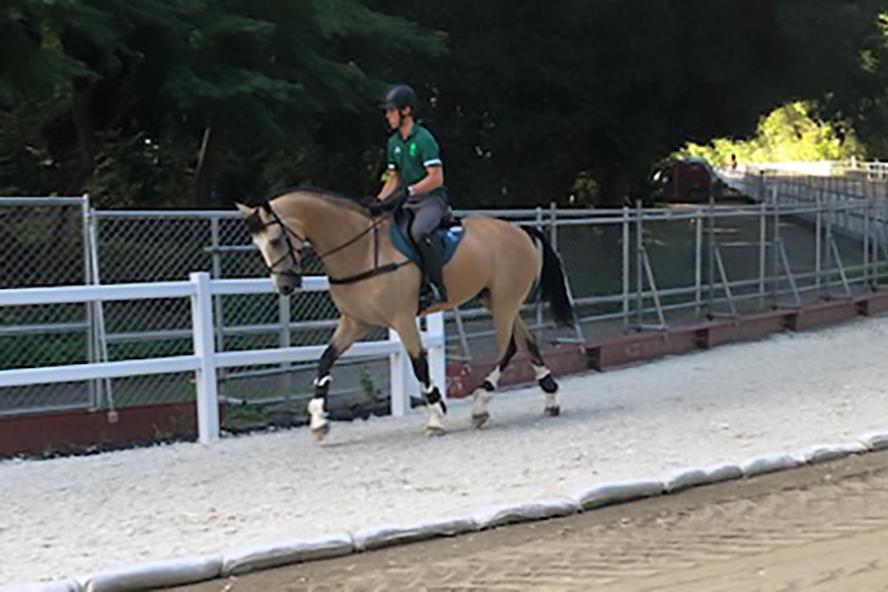-
About
-
- Leadership & Faculty
-
- News & Events
-
Academics
-
- Graduate
- Advanced Clinical Training
- Continuing Education
-
- Academic Offices
-
Student Life
-
Research
-
Hospitals & Clinics
-
- Emergency Care
- Hospital Services
-
Community Outreach
The Gold Standard
It was a dream come true for Wade Tenney, D.V.M., when he acted as a veterinary collaborator for the equestrian events at the Tokyo Olympic Games.

For five years, Wade Tenney, D.V.M., B.S., DACVSMR, has been overseeing veterinary care at FEI (International Federation for Equestrian Sports) equestrian events across the country. And, it’s all been leading up to his ultimate dream competition—the Olympics. After applying at the recommendation of a fellow veterinarian, Tenney was quickly accepted as a veterinary collaborator for the dressage, eventing, and show jumping events at the 2020 Tokyo games. “Since I was a kid, I always dreamed about going to the Olympics,” he says. “I knew it was going to be a lot different than how it would have been otherwise pre-COVID, but it was still an amazing experience. And one that I hope to get to do again.”
As elite athletes at the pinnacle of equestrian sporting events, the equine competitors required a watchful eye to ensure their health over the course of the Olympics. “Anytime horses were warming up or competing, they had to have a veterinarian present,” explains Tenney. “The field of play—or the arena where the competition was taking place—had a veterinarian on hand, as well as a surgeon and an ambulance driver, to administer first aid just in case something happened.”
The most intense phase of any of the competitions, cross-country, had a veterinary collaborator stationed at each jump or series of jumps, as well as at the warmup to ensure they weren’t overheated before going on course. “The main responsibility was to look out for the safety and welfare of the horse,” says Tenney. “The organizers took a lot of steps to make sure that the horses were well-cared for. They did a really good job.”
The veterinary collaborators walked the cross-country course prior to competition day to see where each veterinarian was stationed and had an up-close look at the elite level the horses perform at. “Just standing by those jumps—seeing how tall they are, how wide they are, the hills leading up to the water jumps—definitely gave us an appreciation for how challenging the course was,” says Dr. Tenney. “I’m always amazed just being around these horses and athletes and watching what they do.”
Tenney believes that overseeing the competitions offers more than the safety of the athletes. “When you’re watching these competitions, especially at this high level, I think it gives you a little bit more awareness of the demands for the different disciplines and even better understanding of the slightly different subsets of soft tissue injuries depending on the stresses involved with that.”
Tenney also had the opportunity to collaborate with veterinarians from across the globe, including from the Japan Racing Association and other guest collaborators from the US, Belgium, UK, Australia, Ecuador, and Mexico. “For me, the most rewarding thing was getting to work with amazing professionals from all over the world, comparing stories and treatments between countries.
“All of these people with all these different stories and different backgrounds, all coming together for the same love of the sport was great to be a part of.”